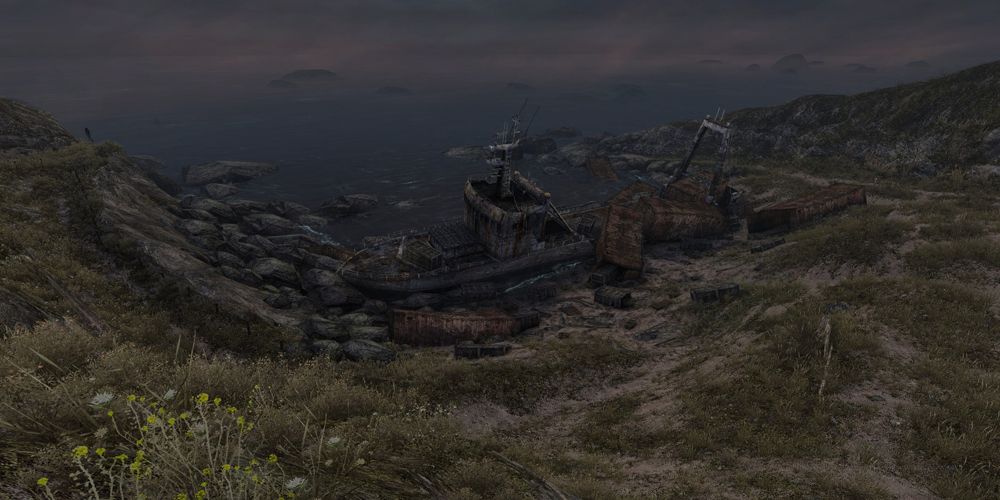For a game that’s just about walking, Dear Esther is a quietly monumental, as well as a strangely controversial piece of media. Ten years ago it inspired a flurry of conversations (read: discourse) about whether it’s a “real” game or not. Some critics have said that it is, empirically, a terrible one, since it’s devoid of the typical signifiers of games—interactivity, mechanical depth, player agency—but that it is also a fascinating, almost defiant attempt in reinterpreting the medium. Others have said that it’s akin to an interactive movie that tells a transcendental, moving tale about a man who’s seeking redemption and closure, a finale to his desolate state of affairs.
But Dear Esther is also deeply purgatorial. It’s a game about walking endlessly and slowly through a grassy, mountainous island and crystalline caves, diving into subterranean waterfalls, and ruminating over an apocalyptic future alone—purged of the usual cacophony of gunfire, the smouldering residuals of battles, and the trifling inclusion of illogical puzzles. It’s very much an experience about the quiet act of walking and wandering, made up of the in-between scenes of the most rambunctious of first-person shooters when you’re traversing between combat zones and taking in the scenic sights of the landscapes.
As you walk, snippets of monologues are gradually unlocked, but you can walk at your pace—in fact, you’re encouraged to, given the absolutely glacial pace the man is walking at (there’s no option to run and jump). Dear Esther seems almost boring and devoid of activities to do at first, but without these distractions, you’re also made to meditate upon this isolation that you share with the narrator. Without anything else to do, the environment thus wills you to look at it even more closely: a discarded bottle, the dead seagulls, the stalactites in the cavern. In particular, Dear Esther—and the entire movement of games that it later inspired—is mesmerising in its repetitiveness, minimalism and single-mindedness to just let you walk.
Playing Dear Esther ten years after its initial release didn’t dull its grandeur at all, and the truth is that Dear Esther is actually a very, very good game. The contrast between the oppressively breathtaking atmosphere and the morose reality of the protagonist is sheer melancholy; his leg is shattered, he had painfully recovered from a kidney stone operation, and his wife is dead. And for all its graceful mundaneness, Dear Esther simply cannot exist as anything else. Even if translated to another medium, its experiences on longing and loneliness will be a marked departure from the original. That one of the more common criticisms against it is that it’s more of an interactive movie is a misnomer; it’s a thought exercise that’s about as pointless as taking a holographic image and saying that it’s an “interactive photograph”. Is the picture really interactive? What do you get from this distinction? And why does that really matter anyway? Nor is Dear Esther a cinematic experience; the game does not dictate the juxtaposition of scenes or images in a specific order and time. Instead, it has always been the player who’s controlling the camera and the pace of the tale. It lets you choose how you choose to go through its landscapes. Take a little longer and swim in the underground river, or admire the celestial sight of a solitary moon at the centre of the night sky.
Video games are rife with spectacle, bombast and busyness: you get explosive gunfire, the pulverising of bodies to sinew and flesh, the intricate puzzles embedded in landscapes of most other games. Dear Esther eschews that in favour of a more muted and meditative experience, inadvertently inviting chatter, a decade ago, that it’s not so much a real game as it is merely a series of moving images. But Dear Esther is as good a game as it gets. All you need to do is walk, observe, and listen.
Source: Read Full Article
